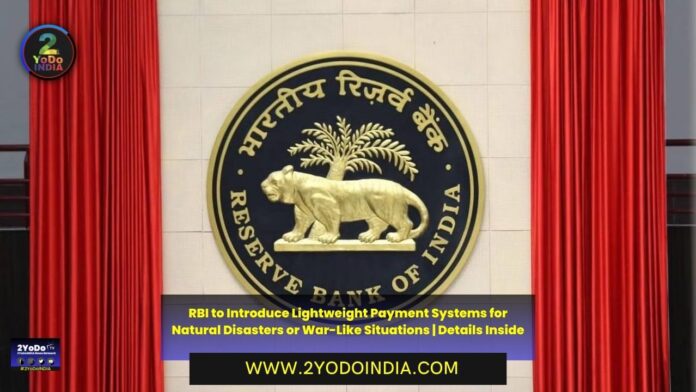In a move to address potential disruptions cause by catastrophic events or volatile situations, the Reserve Bank of India (RBI) has unveiled a new initiative, the Lightweight Payment and Settlement System (LPSS).
This innovative system aims to provide uninterrupted financial services even when conventional payment systems are temporarily unavailable due to disruptions in the underlying information and communication infrastructure.
Payment systems such as Real Time Gross Settlement (RTGS), National Electronic Funds Transfer (NEFT), and Unified Payments Interface (UPI) have relied on complex wire networks and advance IT infrastructure to handle large volumes while ensuring sustain availability.
These systems are susceptible to being render inoperative during natural calamities or periods of war, posing a significant challenge to the stability of the economy.
The importance of being prepare for extreme and volatile situations, the RBI has conceptualize the LPSS as a lightweight and portable payment system.
This system will operate independently of conventional technologies and can be manage from any location with minimal staff requirements.
Details about the new payments system have share in RBI’s latest annual report.
The LPSS is design to function on minimalistic hardware and software, only becoming active when necessary.
It will primarily focus on processing critical transactions essential for maintaining the stability of the economy, including government and market-related transactions.
By providing near-zero downtime, this payment system aims to keep the liquidity pipeline of the economy intact.
It will facilitate uninterrupted essential payment services, such as bulk payments, interbank payments, and the provision of cash to participant institutions.
The introduction of the LPSS marks a significant milestone in ensuring the continuous functioning of the payment and settlement system, even during extreme conditions.
By acting as a bunker equivalent in the realm of payment systems, it enhances public confidence in digital payments and financial market infrastructure.





